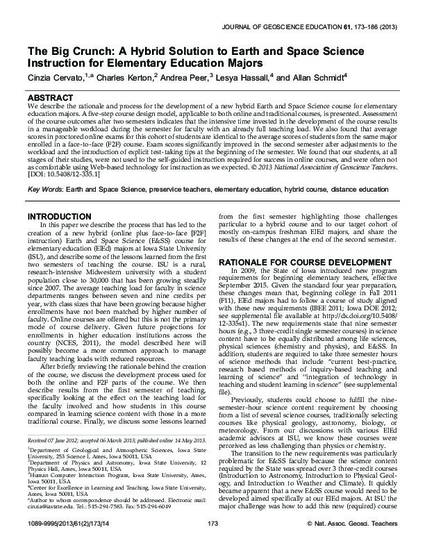
We describe the rationale and process for the development of a new hybrid Earth and Space Science course for elementary education majors. A five-step course design model, applicable to both online and traditional courses, is presented. Assessment of the course outcomes after two semesters indicates that the intensive time invested in the development of the course results in a manageable workload during the semester for faculty with an already full teaching load. We also found that average scores in proctored online exams for this cohort of students are identical to the average scores of students from the same major enrolled in a face-to-face (F2F) course. Exam scores significantly improved in the second semester after adjustments to the workload and the introduction of explicit test-taking tips at the beginning of the semester. We found that our students, at all stages of their studies, were not used to the self-guided instruction required for success in online courses, and were often not as comfortable using Web-based technology for instruction as we expected.
Available at: http://works.bepress.com/lesya-hassall/3/

This article is from Journal of Geoscience Education 61 (2013): 173, doi:10.5408/12-335.1. Posted with permission.